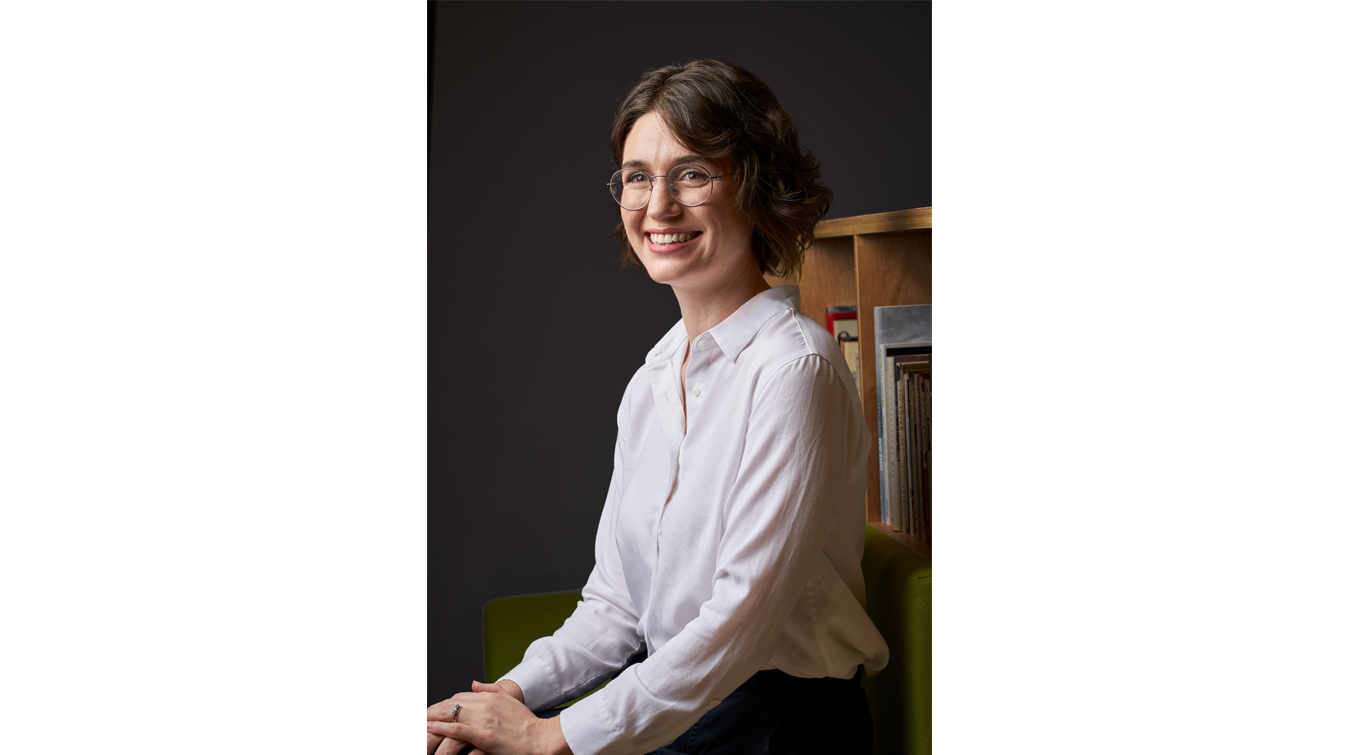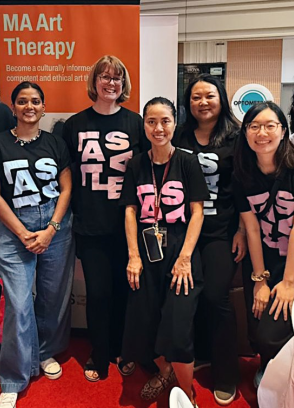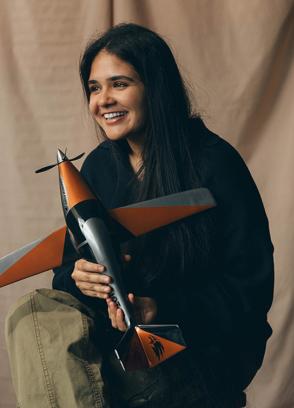Contemporary art has a reputation for being a little too smug and enchanted with itself – news that a banana duct taped to a wall sold for US$120,000 at Art Basel Miami in 2019 launched a million memes and much hand wringing about what really constitutes art in this day and age.
We check in with Asian Art Histories lecturer Dr Clare Veal about the relevance that contemporary art and, by extension, art history has on our everyday lives and what new frontiers in art history research lie unexplored in Southeast Asia.
Hi Clare, how did you come to be interested in art history?
I read John Berger’s Ways of Seeing when I was 17 years old and became really fascinated with art history. I attended a practice-based arts school in Australia not dissimilar to LASALLE, so even though I was pursuing art history and theory, I did Fine Arts electives in photography and sculpture. I think that informed the way I study art history – while I don’t pretend to be a practitioner, I believe it is important that art historians understand the creative process, the way artists work and the intricacies of praxis.
What led you to focus on Southeast Asian art?
When I did my undergraduate degree in Sydney and wrote on photography in Thailand, there were some artists I couldn’t find any information about. I saw a great research opportunity because at that time, there didn’t seem to be the same critical density in histories of photography in Thailand, that you would find, say, in a European context. That’s how I started to be involved in Southeast Asian art. As you go along, it is like opening a Pandora’s box because the field is so rich.
Focusing on Southeast Asian art also gave me the opportunity to work very closely with practitioners. To go back to my earlier point about the importance of understanding artistic practice as an art historian – when you’re working on or writing on very big western artists, it is often difficult to get in contact with them. If you do, you have to go through publicists or assistants and it can be a very laborious process. When I started working in Southeast Asia, I found that artists were very available and willing to talk. While doing my fieldwork in Thailand, I found that one could become a part of this very vibrant arts community in a way that I hadn’t experienced in an Australian context.
Why did you decide to come to LASALLE?
When I graduated with my PhD, I was very interested to work in a practice-based institution – somewhere I would constantly be in contact with practising artists and be in Southeast Asia as well. These things all fell into place when I got a job at LASALLE where the MA Asian Art Histories programme is the only postgraduate programme that focuses on Southeast Asian modern and contemporary art.
What are the challenges in working in contexts with little scholarship in English?
You have to learn the language. There’s no compromising, at least from my perspective.
It was also the approach of my PhD supervisor, John Clark, who uses a methodology that is very much based on deep contextual research. Language affects different types of terminologies, and the way concepts are expressed. Not having this accessibility, I think, really limits you.
Increasingly, art historians working in Southeast Asia are called to work regionally. There are a number of reasons for this, one being that national art histories can be very limiting. But of course the challenge with that is how you go into depth when you’re spread so wide – I don’t know the answer to that question.
The call to work regionally suggests that there’s a cohesive canon of Southeast Asian art history… but isn’t that problematic as well?
This is something we’re concerned with in the programme. Even though we talk about Southeast Asia or Asia, we have to problematise these definitions. Language is like that in any context. I think of it in terms of what Gayatri Spivak called ‘strategic essentialisms’. You need to use these categories because they are functional and useful to an extent. Depending on what school of thought you align yourself with, the regional can be seen as a kind of compromise between national art histories and global art histories. There are also scholars who use the term ‘regional’ but with the caveat that it too is an invented category.
At a time where it feels like there are pressing political and environmental global crises, why do you think people should still care about contemporary art?
Art is vital, it has to be. What we are experiencing right now is a failure of imagination
It’s so frustrating that we are caught in a system where our options seem so limited. The way in which political action has been undertaken historically is not working. We need imagination. We need new strategies that do not fall into the traps of a progressivist logic, or the notion that unfettered progress is possible without hitting the wall. That’s where I see the function of art, to help us rethink the strategies we are using to address these issues.
There are so many artists now who are collaborating with people from other fields to create something to engage the public with these issues in a non-instrumentalist way. What are the possibilities for how action could look? Who knows what to do in this type of situation? That’s why I call it a crisis of imagination.
If contemporary art enables us to engage the present, then what about art history, doesn’t it look back into the past instead?
Art history is also practice. Even though you’re looking back, there are different ways in which the past can become relevant in the present. We have to think about art history as offering these new possibilities for how we engage with images – not just art but images in general.
In this sense, there are a lot of ways that art historians and practitioners can learn from each other. I learn a lot from the students I teach at LASALLE, not just the Asian Art Histories students but the Fine Arts students. It forces me to interrogate the way in which I do my work, how it is relevant to others, the community and research in Southeast Asia. It forces you to go beyond the academic bubble, because you’re constantly confronted with practice in the here and now. So even if I’m looking at, for example, John Thomson’s photographs which were taken in the mid-19th century, the way that I look at these images is informed by the conversations that I’ve had with practising artists. I don’t see it as an anachronistic thing. It is a kind of folding in of the past into the present.
What work remains to be done in the field?
Southeast Asian art history is really quite fresh. There is not a stable historical canon to deal with. As much as we bemoan that there are insufficient books, it is an opportunity to rethink what it means to delineate a field of study. So we might think about what is the role of archives, for example, in a really critical way. Instead of just taking for granted that we have to have an archive, we might question what is an archive in this context, what form should it take? When we think of issues of accessibility or issues of cataloguing in archive – all of these things have ideological significance.
All of these questions are really at the forefront of Southeast Asian art histories and that’s what I find really exciting about the field. You’re simultaneously generating something new and constantly dismantling.
So if one were a newcomer to contemporary art, where should one start with art history?
You have to start with art that speaks to you. My PhD topic came from an interest in one or two artists and it just grew from there. So I think you begin with whatever pricks you, affects you or moves you. You have to start with art that you feel is important, even if you don’t know how to articulate that to start with. But that’s what the process of art history is about. It’s about learning how to understand why certain works, why certain artists speak to people at different historical moments
Most of our students come in with general interests – like performance or photography. You shouldn’t feel like you have to fill a critical gap. Even if you’re writing about an artist or group of artists that have been written about before, I still think in virtually every context there are so many opportunities to take fresh perspectives. The critical density is something that we need to establish and that means having conversations with each other and not feeling like a specific person ‘owns’ a topic. Start with what you like and go from there!




